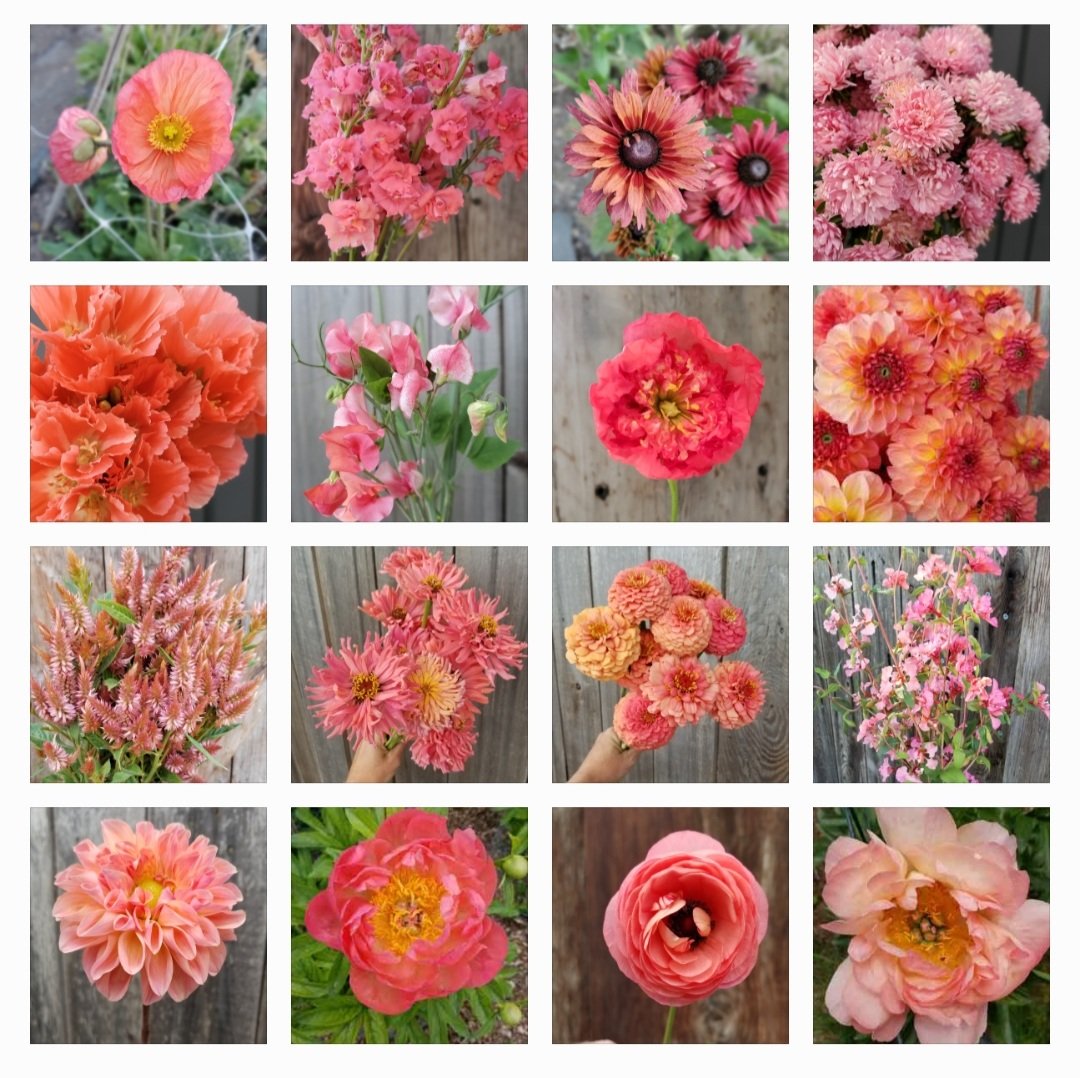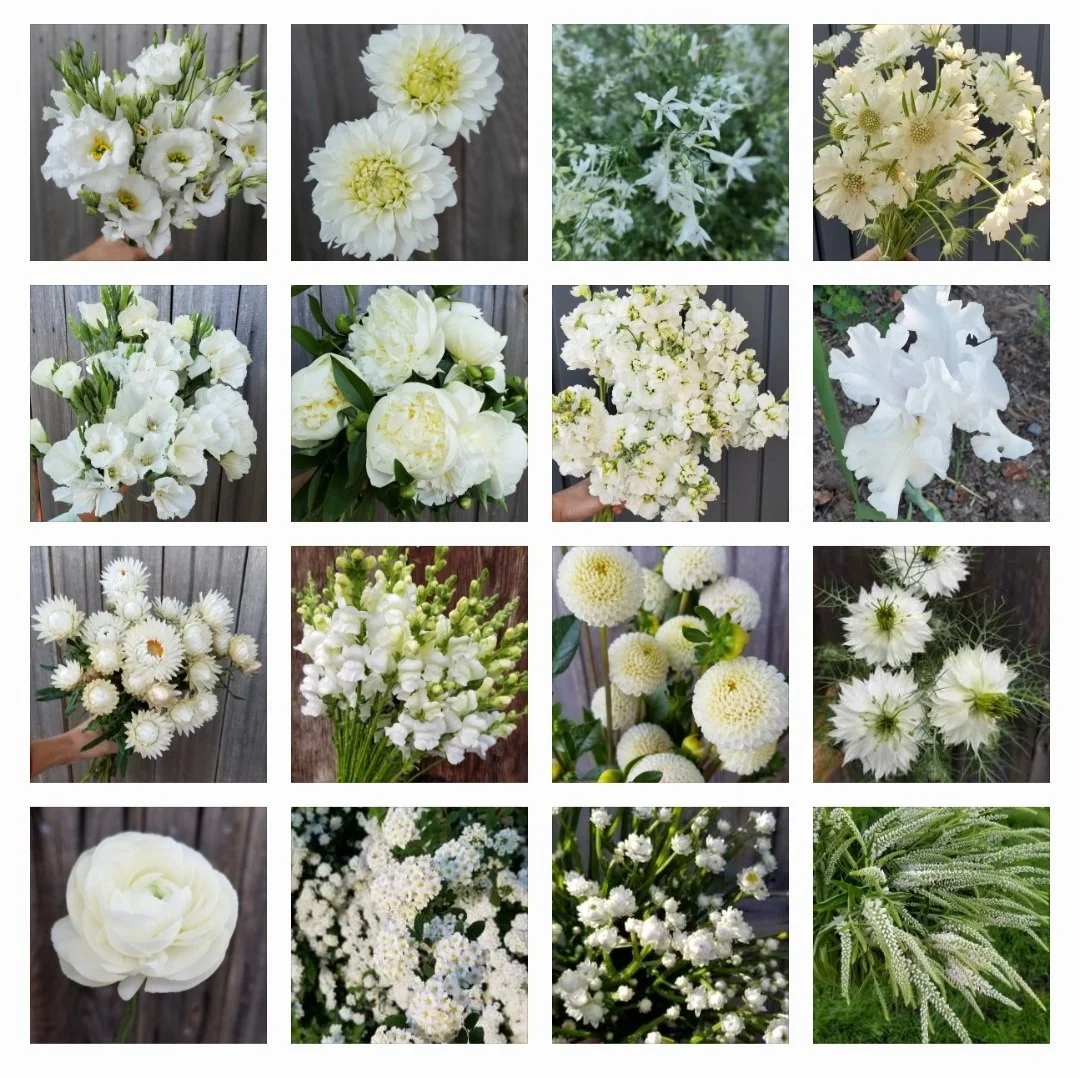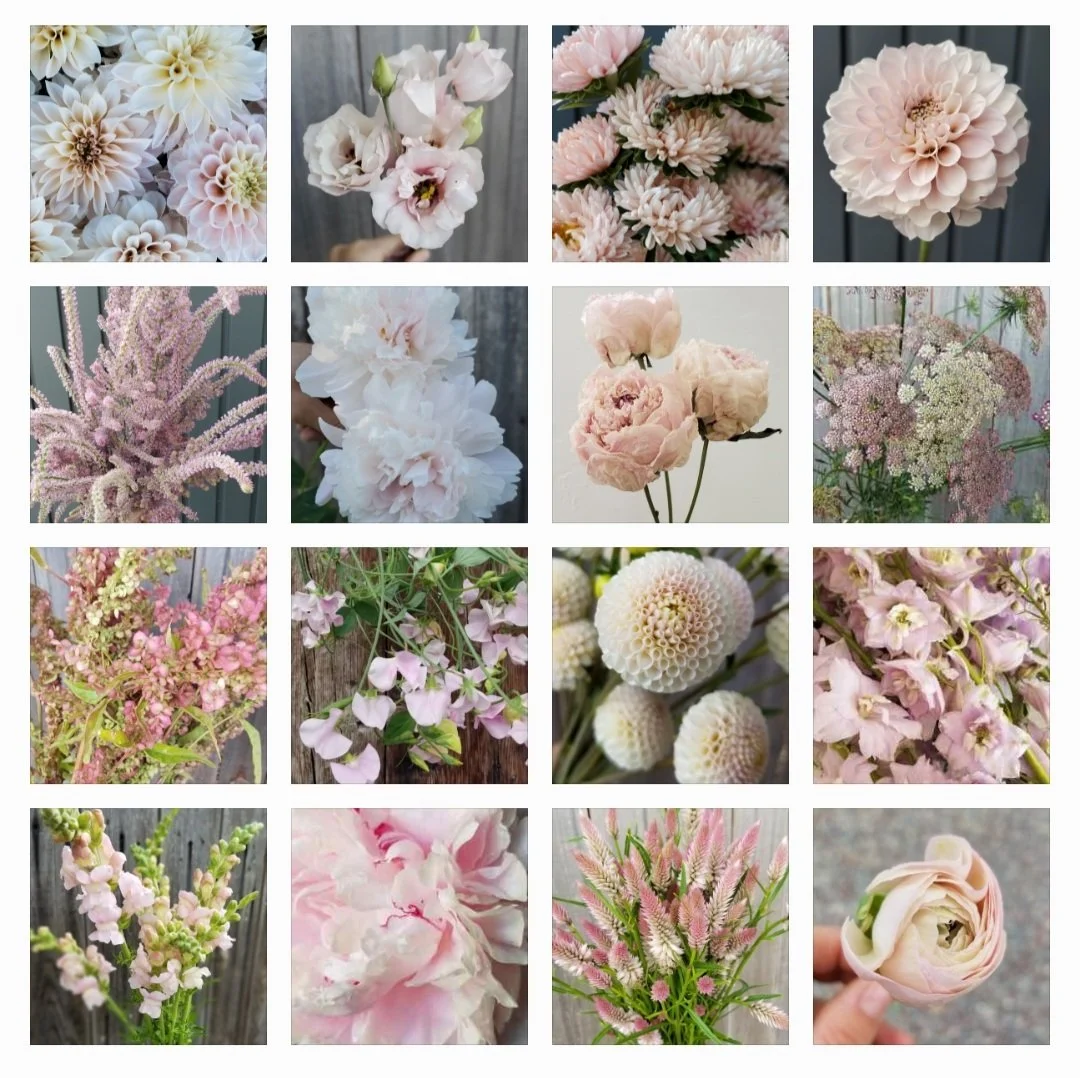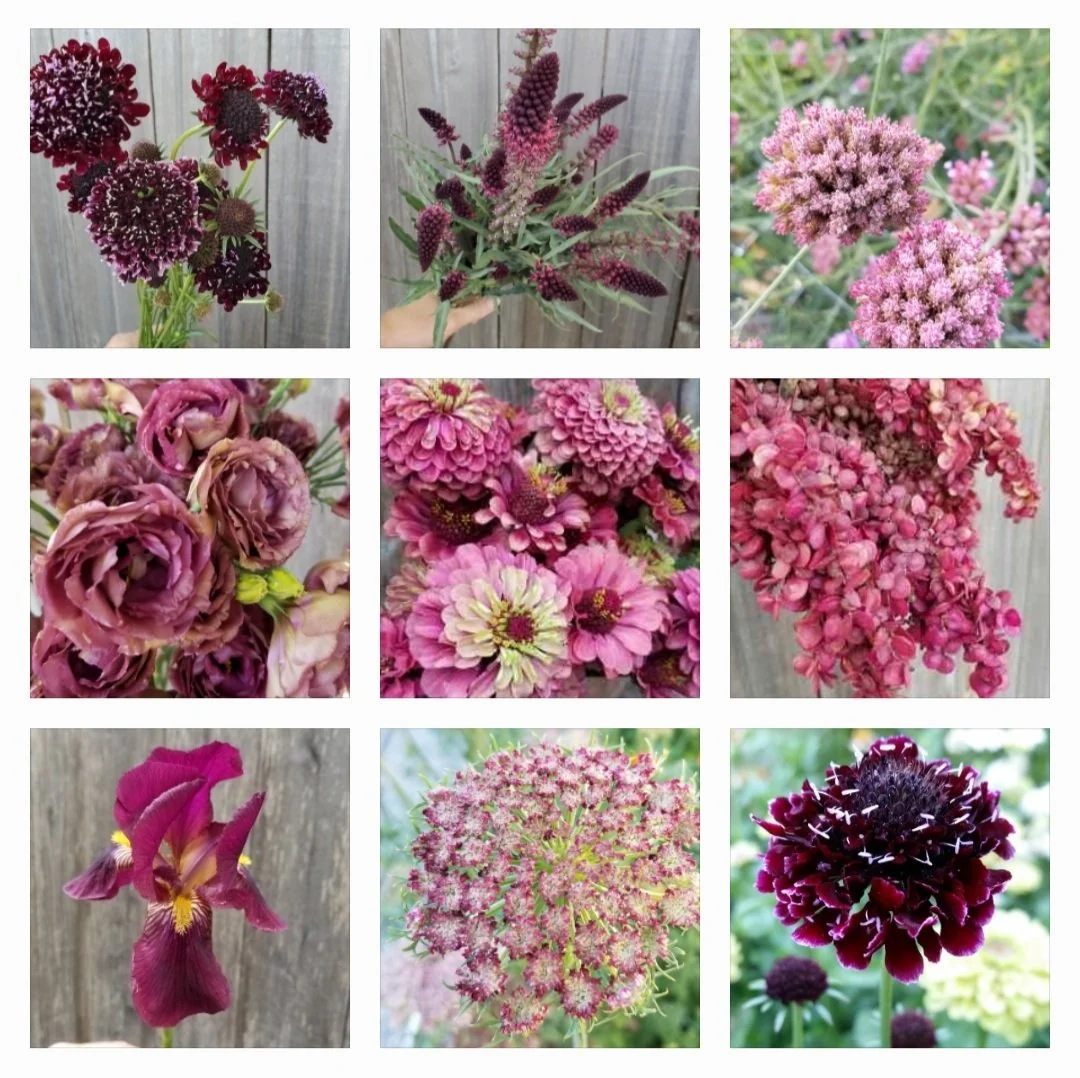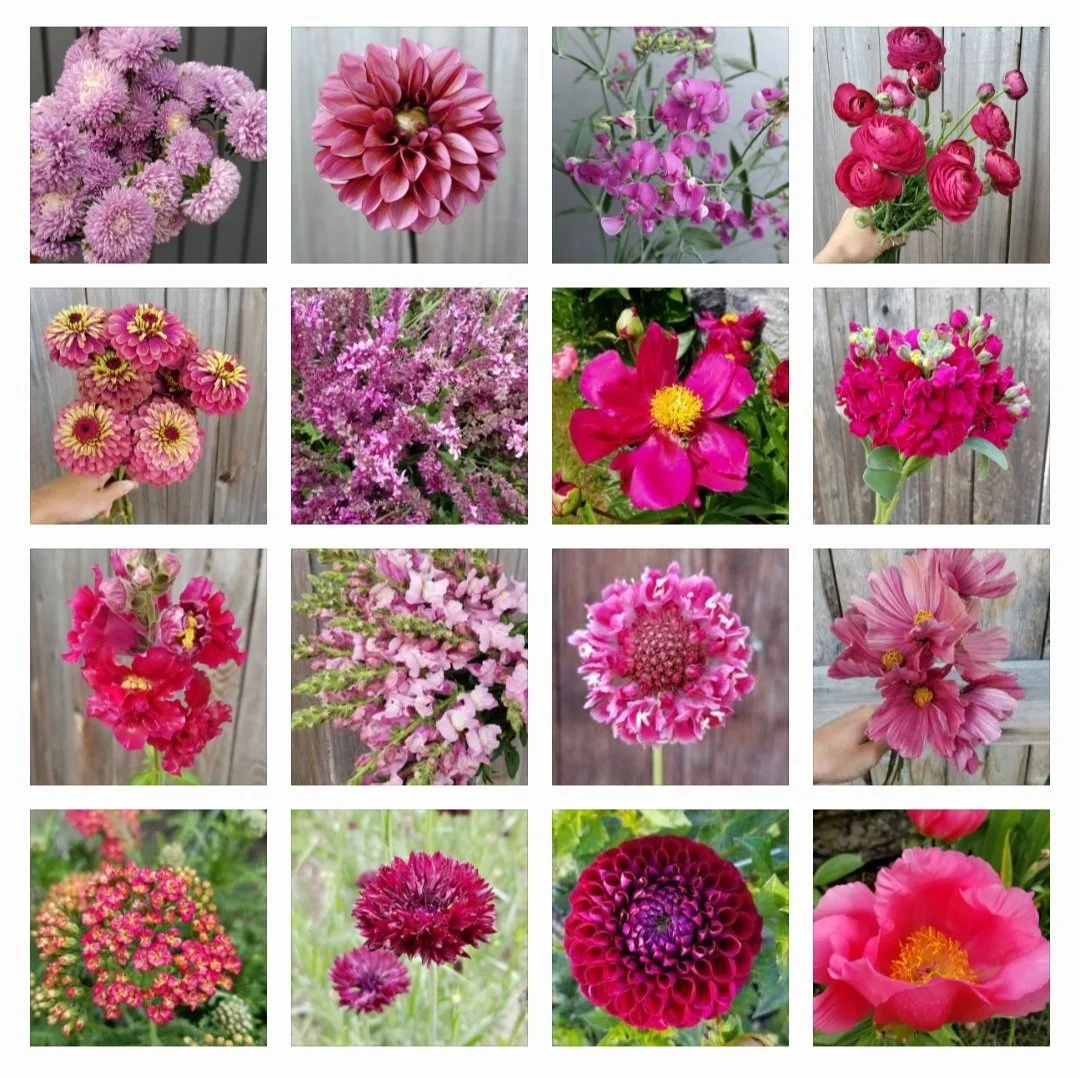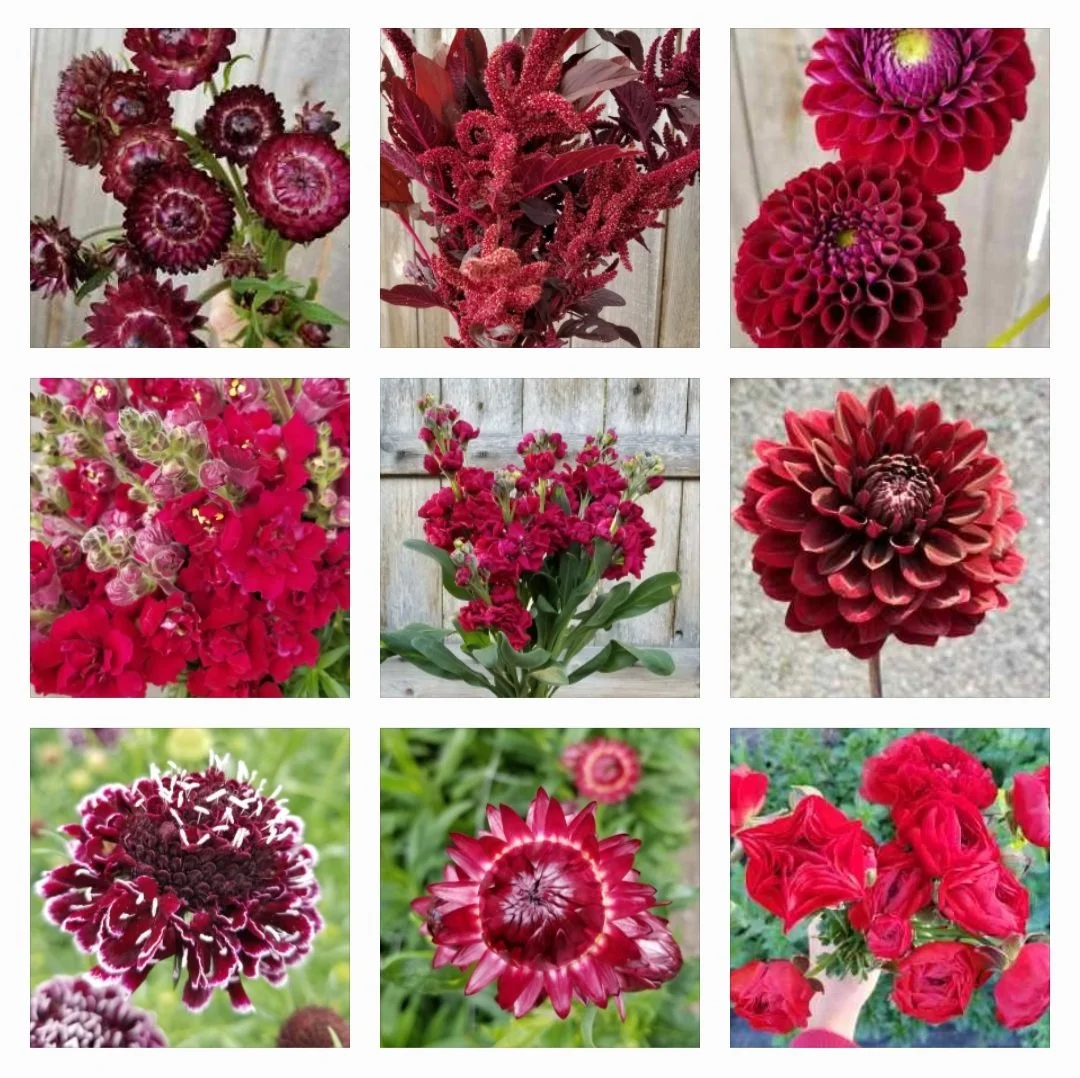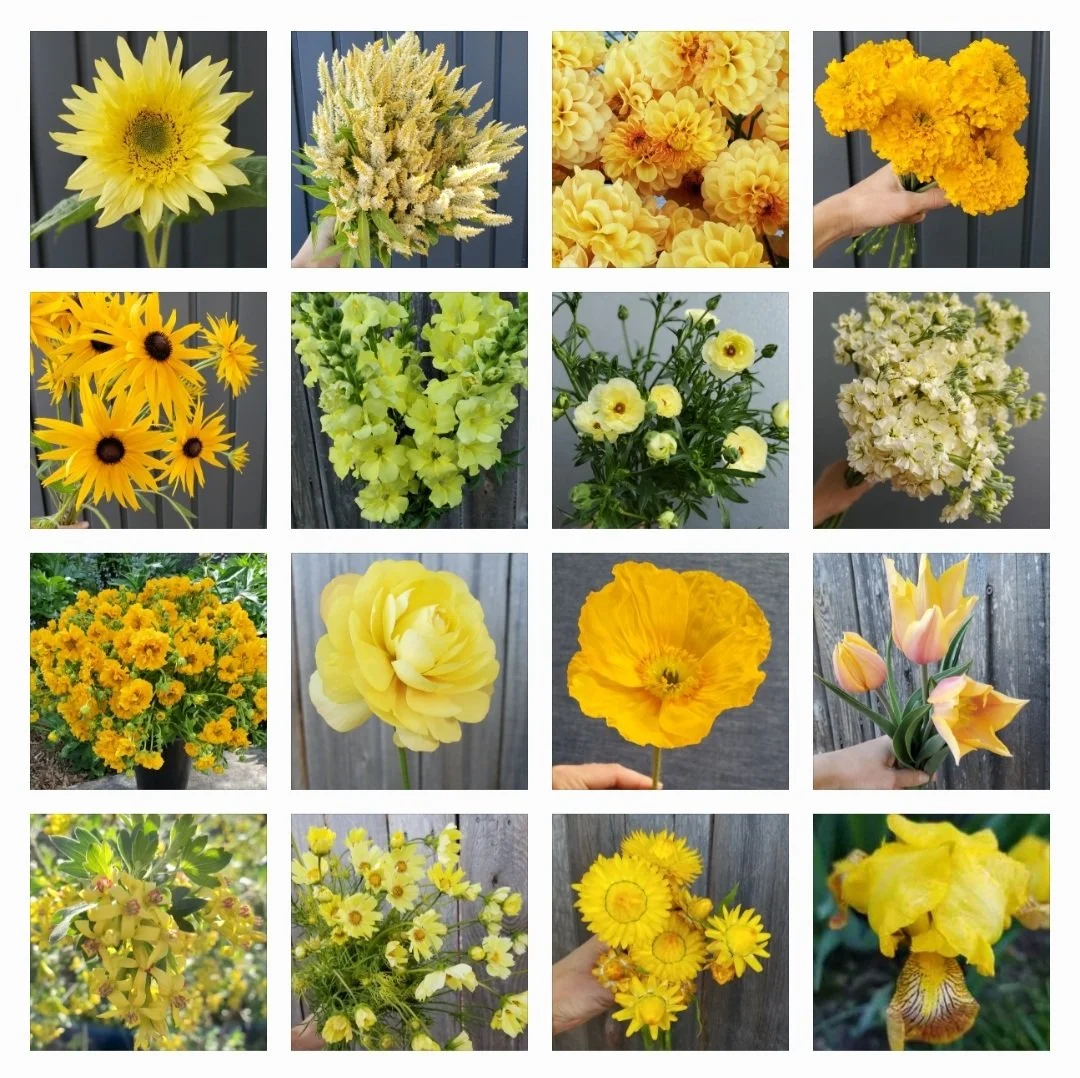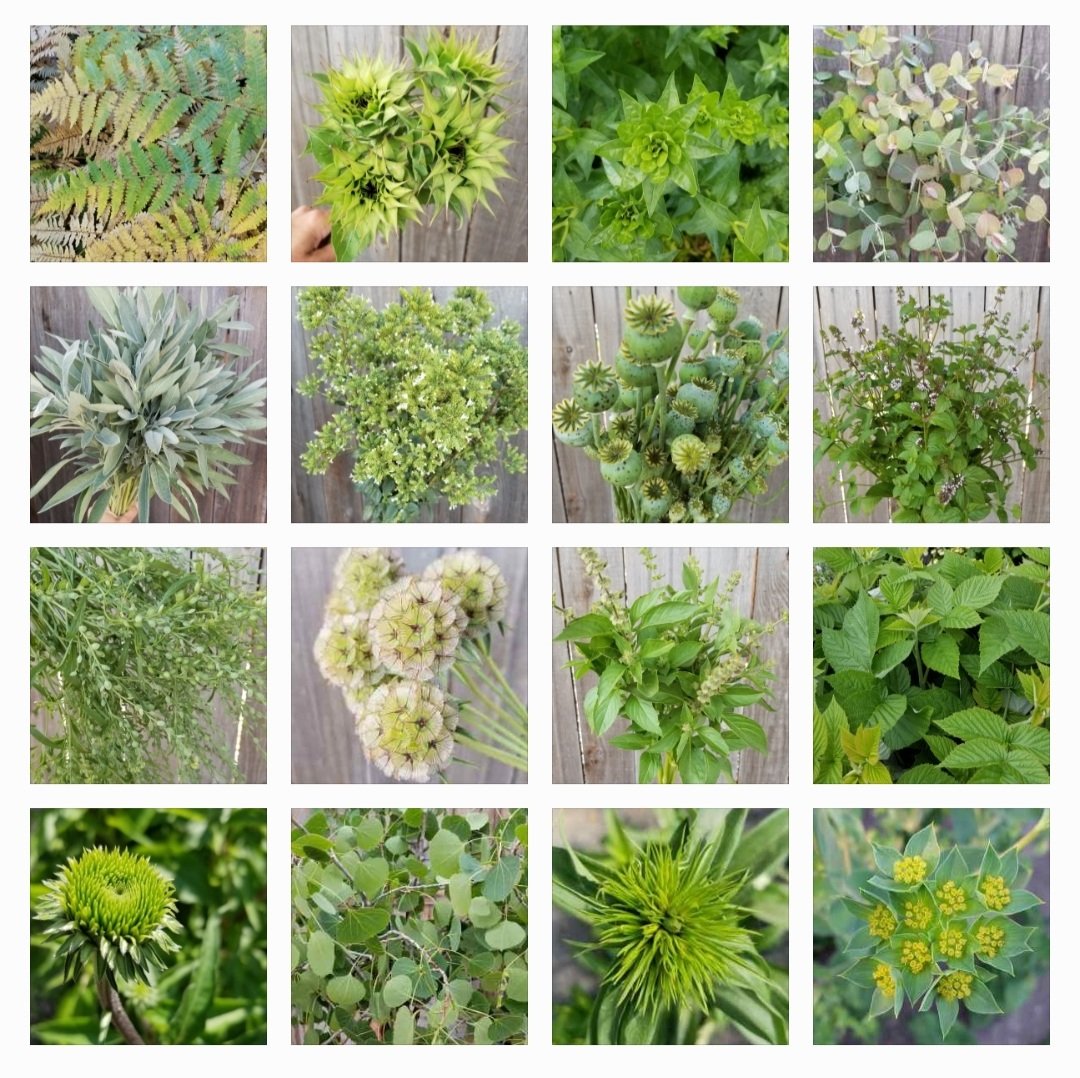Farm-Fresh Color Palettes
/Noticing and enjoying color is a big part of why I grow flowers. Once you starting seeing all the nuances, hues and shades, it’s impossible to stop.
I put together these color palettes to highlight blooms from across the seasons. You’ll see some flowers repeated in multiple palettes, showing how an individual bloom might be more coral than peach, for example, or how flower colors can shift depending on light or temperature or stage of harvest.
Pink, coral, salmon…
These colors are wide-ranging in the flower world, and there are so many words to describe them. Looking closely, you’ll notice how most blooms feature more than one color, which makes them harder (and more fun) to describe.
White and shades of blush
You can never grow enough of these colors, especially if you’re growing for weddings. I make sure to have white flowers blooming in every season – white is timeless. Blush is a favorite on its own or mixed with other colors to make a palette softer or more romantic. Some blush flowers can tend toward yellow, and others have more muddy cocoa undertones.
Peach, bronze, copper and gold
These are my personal favorites. I love the nuances here, with colors that shift in the light and are hard to describe. They mix well with so many different palettes. I find that seedpods, grasses and fall foliage have the most variation, and those metallic hints add an extra layer of elegance and warmth.
Reds and reddish purples
Here’s where you’ll find words like plummy, berry, crimson, fuchsia, magenta, carmine, mulberry and burgundy. Delicious, right? Bright red flowers can be hard to combine with other colors, so I tend to grow more muted or nuanced reds. A berry color palette (center) is a fun way to mix a range of colors, and it’s a popular analogous color palette.
Yellow! Orange!
These colors are pure fun. Over years of growing flowers, I’ve developed a real fondness for yellow, either on its own or mixed with other colors. And I’ve always loved orange – it adds a happy and playful splash to any color palette. Orange is especially apropos in midsummer, when the color matches the temperature and contrasts well with Montana’s bright blue skies.
Green, blue, purple
Green is everywhere, but it’s fun to notice how flowers can be green too: before blooming, after the petals fall or during seed formation. True blue flowers are rare, so I try to grow as many blue or blue-adjacent flowers as I can. I’ve found that purple is often a love-it or leave-it color, but softer shade like lavender are easier to mix into a variety of color palettes.
Want more details? In the online shop you can purchase my complete Flower Color Palettes PDF, which includes variety names, bloom season, and seed or bulb source.


